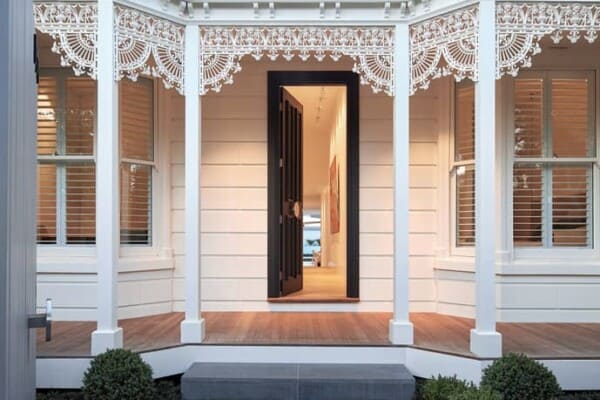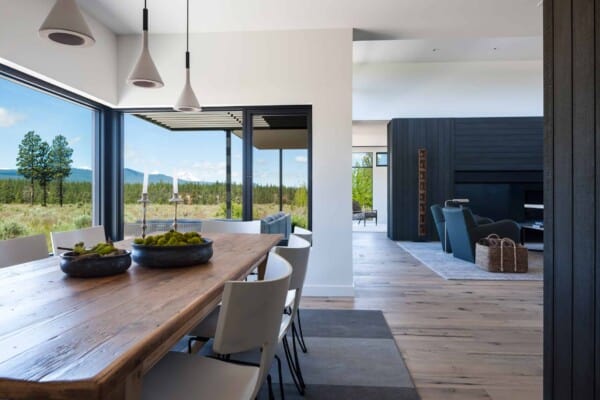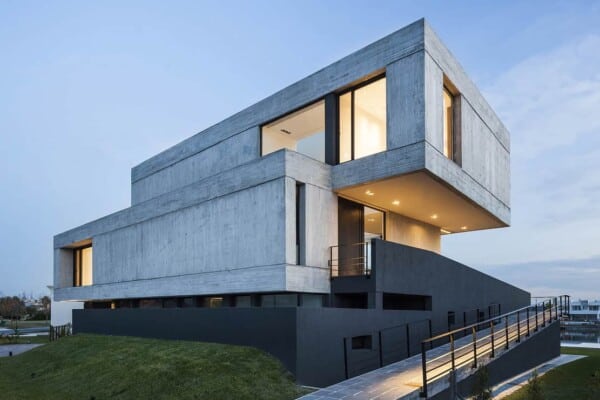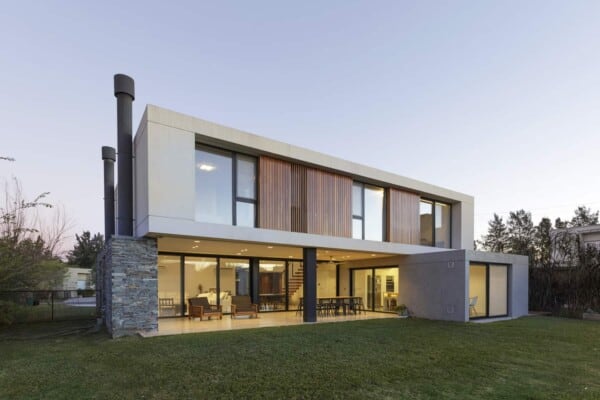Fábio Coentrão House is a private residence designed by António Fernandez Architects.
It is located in Povoa de Varzim, Portugal and was completed in 2013.
Fábio Coentrão House by António Fernandez Architects:
“As a project, the Fábio Coentrão House presented a unique challenge since its intention was to respond effectively to a demanding programme of a very personal nature for the building as a whole and individually for each space. The house is part of a subdivision still under development. The back of the lot faces a forested plot of land, and the house, integrated within an urban space with a strongly rural character, had every chance to serve as a different model. Different, individualized, unique, just as the owners wanted it to be.
The project initially sprang from the wish to obtain the lot in the least usual manner, albeit conforming to all legally stipulated requirements. The subdivision permitted the ground floor to have great depth. In this way, it was possible to design a house in which the spaces are interconnected and open onto interior courtyards at the centre of the polygon-shaped lot. Thus, open spaces were created within the enclosed space, expanding living areas, expanding spaces. The divisions make the most of the exterior space. And the exterior space as ‘the container’s interior’ possesses a dual ‘outside-inside’ living space’. Concepts intervene, hybrid spaces are created, capable of supporting an architecture that aims to be very personalized. The upper floor was much more constrained, limited by the regulations imposed on the lot to a rigidly drawn rectangular polygon. The project succeeded in subverting this constraint.
The idea of a house gutted by courtyards that sculpt the volumes and open new facades recreating spaces within spaces set the tone for the development of the project. The programme demanded even more and the concept gained momentum.
To ordinary passers-by on the street, the house invariably draws attention to itself through its strong presence: the black form vertically cut by mirrored polygons and the enclosing wall covered by black sheet metal polygons. For those who access the lot, the house reveals its glass frames, courtyards and transparencies; the black facade contrasts with the green grass and blue water of the pool onto which the living room opens.For anyone gaining access to the dwelling, the architectural interplay begins immediately by crossing the metal bridge with wooden slats and glass guards over the patio that illuminates the basement floor. The mirrored glass door lies hidden in the facade. The metal profiles that recreate tree branches on the side facade enliven the black coating. Vegetation proliferates at the back of the lot. For those entering the house, the interplay of spaces and different sensations begins.
A black staircase with floating steps and glass guard/wall stands out against the white walls and cabinets. The space is simple with a clear reading. The kitchen, containing custom furniture designed by the architectural firm, is extended by the courtyard that separates it from the living room. The living room, in turn, lives for the courtyard and extends to the wooden slats that mark the transition to the pool and the green grass of the back garden.On this floor, a second courtyard within the container, designed with graphics that provide privacy for the interior spaces, brings together the spaces that connect to the bedrooms, baths and office.Upstairs, the predominance of white in the private bath exudes light. The corridor leading to the suite is lined with closets and a set of mirrors that amplify it, creating yet another ecstasy of illusions.
The bedroom is versatile, permitting different vanishing points, opening up onto the lot’s front with polygonal beams and towards the bedrooms’ courtyard through a large glass plane. The basement contains a cinema and games room facing the courtyard below that communicates visually with the dwelling’s entrance.
In the outdoor areas, namely the courtyards and gardens, design simplicity was chosen for the paving materials, decking, granite slabs and cobbles, conferring a very minimalist reading to the spaces.
In this way, each space speaks for itself, is individuated. All are important, but one space does not attempt to superimpose itself on another. The house unfurls and thrives as a whole. All the spaces are different, all the spaces coexist and interact with one another. They are all necessary, but at the same time each one stands on its own, with a unique design. The dwelling thus possesses a distinctly strong character, where the enjoyment of the space, the visual play between compartments and pure delight of the house’s living areas dominate. For the exterior, the house is black, cut by mirrors, and seems closed. And it’s true! It encloses within itself a rather diversified set of small spaces, each one with a strong identity, all of them small containers of life.”
Photos by: Jose Campos








































































The picture in the shower is so calming and inspirational. What a wonderful vision to see every morning as you start the day. Or for those who shower at night to relax you into bed.